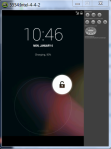I’m storing time in my database as 24 hour format (ie: “13:00” [1:00 PM]) because it’s easy and has a bunch of advantages. But on the front-end, in Angular, I want to show these as a 12 hour format. One way to do this is with a Pipe that will allow you to transform the time to 12 hour. Before creating the below I looking for something existing, but didn’t find anything that seemed to fit and work well, so below is what I use.
This is the function in the pipe (can be used in Javascript for those w/o Angular): (try in jsfiddle)
var time24To12 = function(a) {
//below date doesn't matter.
return (new Date("1955-11-05T" + a + "Z")).toLocaleTimeString("bestfit", {
timeZone: "UTC",
hour12: !0,
hour: "numeric",
minute: "numeric"
});
};When called and passed a time, like:
time24To12('13:00')It will return the 12 hour version:
1:00 PMOkay, so how to add a new Pipe and use it in Angular?
- Create a new file “time24to12.pipe.ts“
- File contents should be the below:
import { Pipe, PipeTransform } from '@angular/core';
@Pipe({ name: 'time24to12Transform' })
export class Time24to12Format implements PipeTransform {
transform(time: any): any {
var time24To12 = function(a) {
//below date doesn't matter.
return (new Date("1955-11-05T" + a + "Z")).toLocaleTimeString("bestfit", {
timeZone: "UTC",
hour12: !0,
hour: "numeric",
minute: "numeric"
});
};
return time24To12(time);
}
}
3. Make sure in your app.module.ts you import this file:
import { Time24to12Format } from './time24to12.pipe';…and also add it to the declarations section:
@NgModule({
declarations: [
...
Time24to12Format,
...4. Now you can use it in views, like below:
{{yourobject.time | convertFrom24To12Format}}Hope this helps someone. No, this code doesn’t check beforehand for correct time input formatting or perform many other things it should, it just trusts you.
 PhoneGap is a great framework for creating cross platform apps (Android, iOS, BB, WM, etc.) using HTML, CSS, and JavaScript and uses Apache Cordova™. Installing and testing on Windows takes little setup, below I’ve tried to cover all of the steps needed to get going. My setup / guide below uses Windows 7, 64 bit, it seems like many steps, but in reality is pretty easy.
PhoneGap is a great framework for creating cross platform apps (Android, iOS, BB, WM, etc.) using HTML, CSS, and JavaScript and uses Apache Cordova™. Installing and testing on Windows takes little setup, below I’ve tried to cover all of the steps needed to get going. My setup / guide below uses Windows 7, 64 bit, it seems like many steps, but in reality is pretty easy.
 If you’ve ever wanted to include a ‘Tweet’ button or link but didn’t want to use the popular
If you’ve ever wanted to include a ‘Tweet’ button or link but didn’t want to use the popular  Adding and setting a cookie via javascript is pretty simple. Sometimes you want the cookie to expire in a certain amount of time, below is the method is use to calculate an expiration:
Adding and setting a cookie via javascript is pretty simple. Sometimes you want the cookie to expire in a certain amount of time, below is the method is use to calculate an expiration: